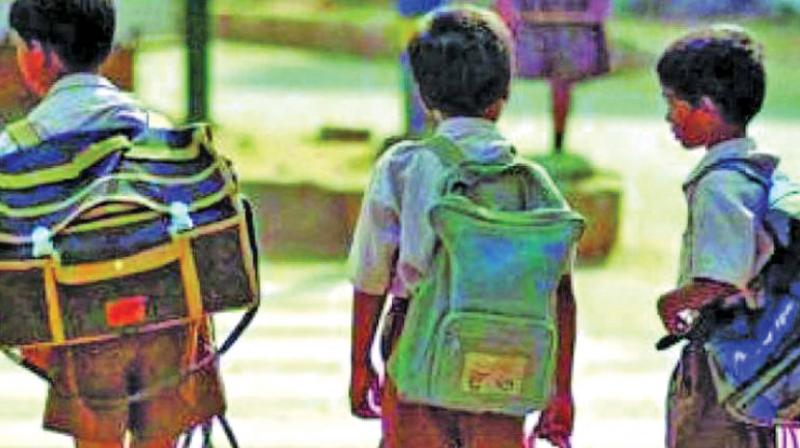Tamil reading ability declining: ASER report
In Tamil Nadu, the percentage of primary schools that had less than 60 students is increasing every year.

CHENNAI: The state government’s initiative to launch English medium sections in government primary schools and craze for English in private schools have an adverse impact on Tamil reading ability among the primary school students.
Among the class 5 students, the number of students who can read the class 2 level text has come down from 45.2% to 40.2% while only 10.2% students from class 3 were able to read the text, according to the Annual Status of Education Report (ASER) 2018.
In the previous cycle in 2016, 17.7% of class 3 students were able to read the class 2 text.
The reading ability of private school students seems to be even worse as only 7.6% students in class 3 were able to read the class 2 text whereas 11.6% students in government schools read it without any mistake.
The ASER 2018 report also revealed that 26.5% of class 3 students were able to read class 1 level text and 40% of them can read the word. More than 17% of them can read letters. In a worrying sign for education policymakers, 6.4% of them were not even able to read the letter.
This year the ASER study was conducted in 930 villages in 31 districts of Tamil Nadu.
Totally, 15,749 students from 5 to 16 years assessed for the study.
“Children who can read class 2 level text in class 3 and 5 has drastically come down compared to previous years and very low compared to national average,” said B.Oliver, state head, Pratham Education Foundation.
At the national level, 27.2% of students in class 3 and 50.3% of students in class 5 read the class 2 level text in their regional languages correctly.
“One of the reasons, both the government and private schools are focusing on English. The Tamil language was not given its due importance,” said B. Oliver, state head, Pratham Education Foundation.
The reading ability of class 8 students have shown a slight improvement as 73 per cent of them can read the class 2 level text compared to 71 per cent in 2016.
Educationist Prince Gajendrababu attributed the decline in Tamil reading ability to the English medium education in both government and private schools.
“If we teach the children in English, the children may not be able to grasp both Tamil and English.
It is difficult for the child from Indian language background to adapt to English language teaching,” he said.
He further asked the ASER researchers to develop a comprehensive tool to know how many hours a child was in active schooling. “It is not fair to assess only learning outcome without knowing the input,” he noted.
V. Sudaroli from Kuzhadaigalai Kondadum Kalvi Iyakkam argued that the study does not reflect the true picture of the schools.
“In any class, there would be 20 per cent of students who have learning difficulties. It was not very alarming. But, there are some issues with English medium sections as the workload of the primary teachers almost doubled,” she said.
However, in basic arithmetic functions, Tamil Nadu students have performed better this time.
“The schools have focused on the basic arithmetic functions. The percentage of class 5 students who can do division has slightly increased from 21.4 per cent in 2016 to 25.4 per cent in 2018. Among the class 8 students, 50 per cent of the students did the divisions correctly,” Oliver said.
In the current study, the ASER has also looked beyond the basics among the children between 14 -16 years of age.
“We have looked whether the students can calculate time, financial decision making and calculating discount,” he added.
Among the assessed students, 53 per cent of them were able to calculate the time and 41.5 per cent of them able to make financial decisions.

